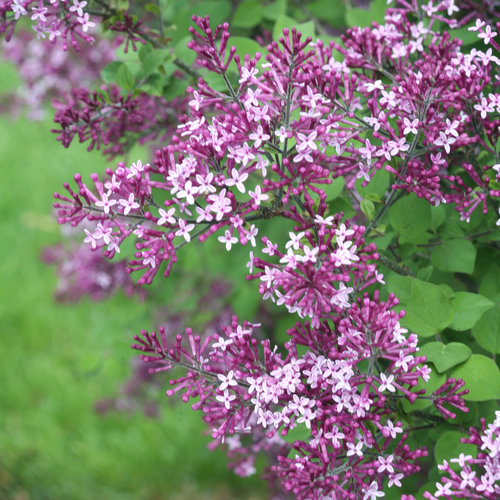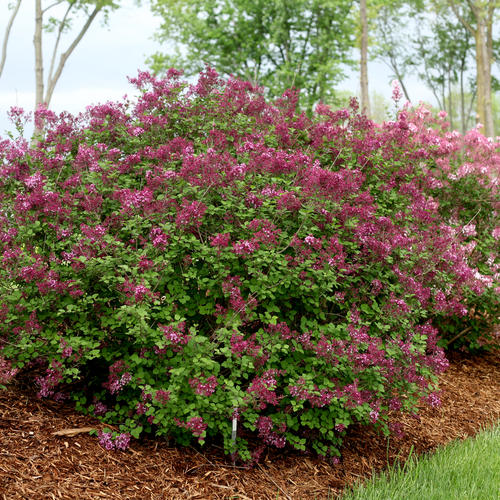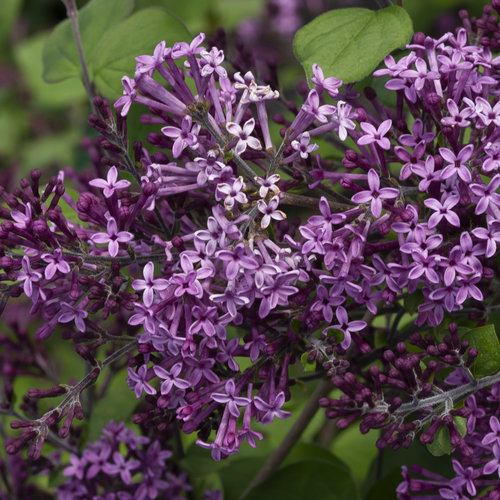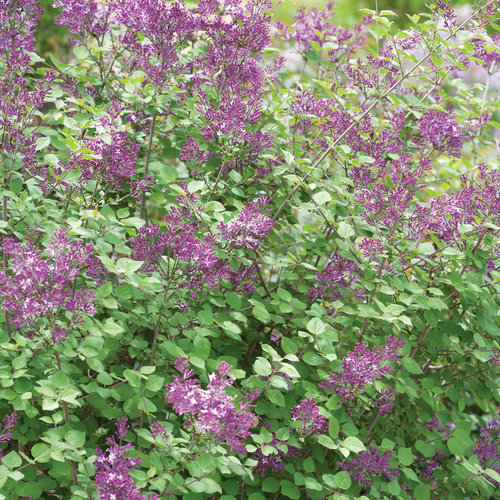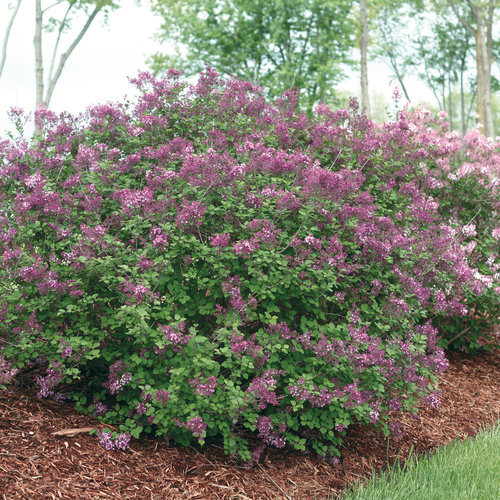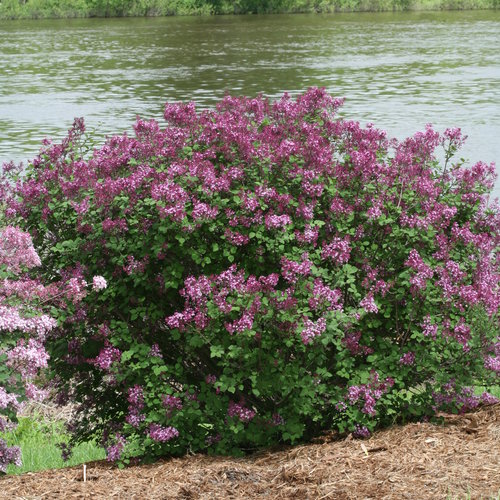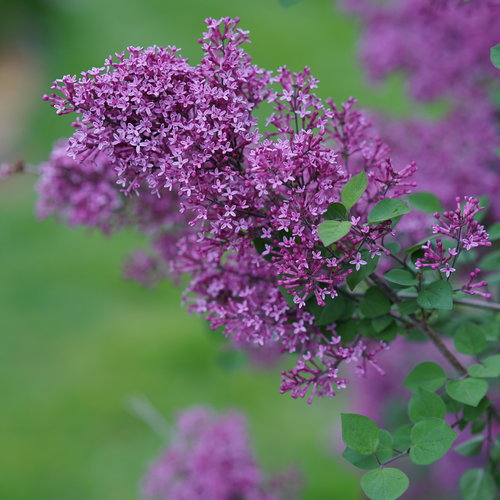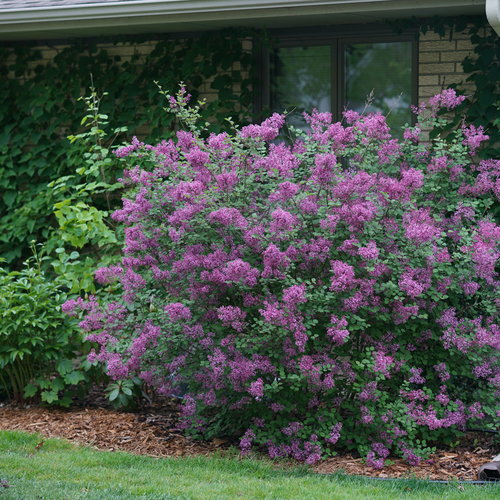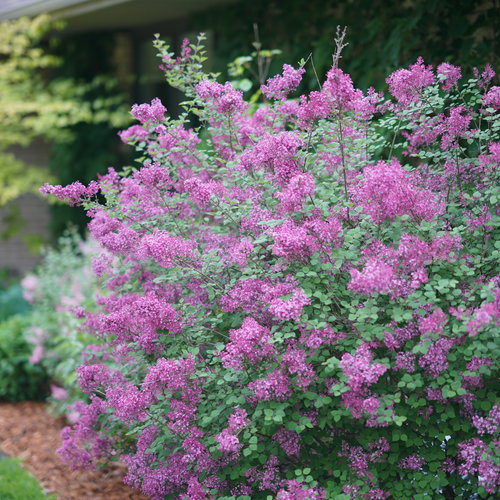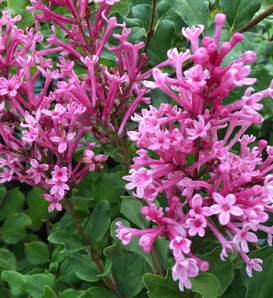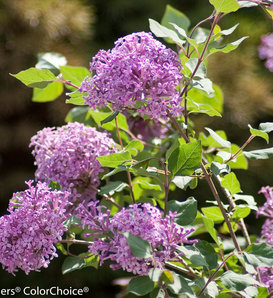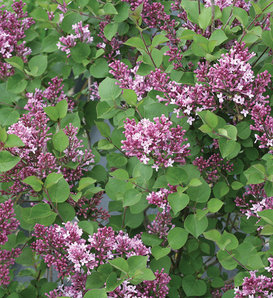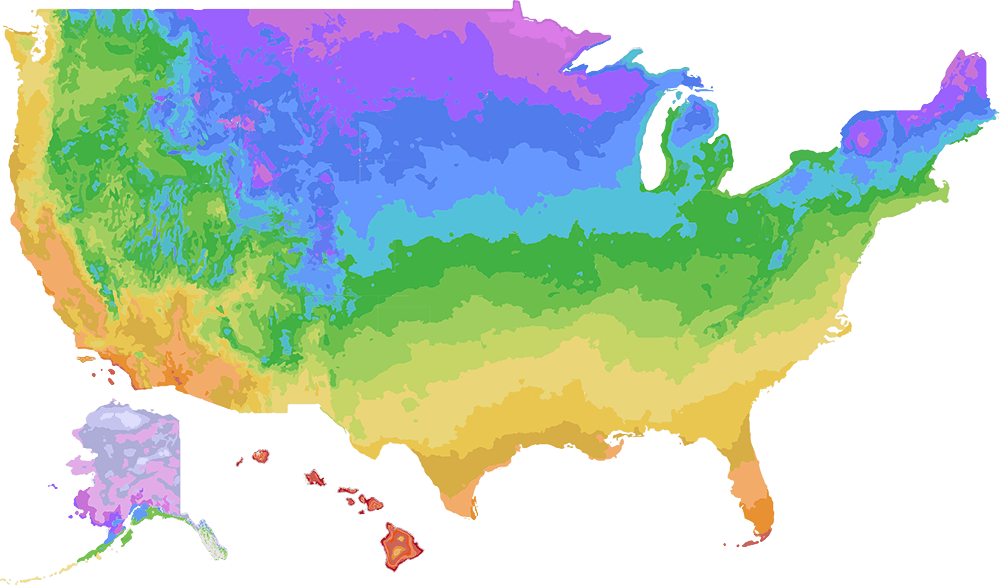Purchased 19 of these three summers ago to fill in our condominium garage rooftop landscaping garden bed surrounded on three sides on the borders by Thujas. They are two years in the ground now at the start of their third season and they are stunning and super vibrant. Chose them because they had a contained growth pattern and were very low maintenance. We have absolutely no regrets. This years blooms are picture perfect. We turned over the entire bed first, weeded and leveled before planting and spread 3 to 4 inches of mulch to finish to protect them. We watered them with a scheduled timer on a simple hose fed drip irrigation system. Almost literally set and forget since then. A couple pruning clips here and there last year on a couple plants to hold their shape, no other pruning. We don’t even bother deadheading them as they appear to take care of themselves quite nicely. Zone 4 with brutal freezing Winter winds and there has been no survival or damage issues.
Bloomerang® Dark Purple Reblooming Lilac Syringa x
- Sun
- Spring
- Summer
-
48 - 72 Inches48 - 84 Inches48 - 72 Inches1.2m - 1.8m1.2m - 2.1m1.2m - 1.8m
Features
Don't settle for lilacs that bloom just once a year - get Bloomerang® lilacs and enjoy months of blooms instead of just weeks.
Big, bold, and beautiful - that's Bloomerang® Dark Purple lilac. Naturally growing as a handsome, rounded shrub, very large dark purple buds emerge in mid to late spring. These open to a classic deep purple-lilac color and perfume the air for weeks. The plant then takes a brief rest to create new growth before it starts to bloom again in mid to late summer, continuing through frost.
Bloomerang lilacs are also noted for their exceptional disease resistance - no worries about ugly white or brown foliage to spoil the floral show. And like other lilacs, it is sun-loving and deer resistant, so it makes an easy care choice for years of beauty.
Bloomerang Dark Purple lilac is featured in our "Two-Timer" magazine ad.
Top reasons to grow Bloomerang Dark Purple lilac:
- It's reblooming! It doesn't only bloom once in spring - it also blooms summer through fall.
- Disease resistant. Doesn't get ugly from fungus and bacteria like older lilacs can.
- Neat, rounded shape looks good in the landscape or garden.
Best SellerFragrant FlowerContinuous Bloom or RebloomerAttracts:ButterfliesResists:DeerCharacteristics
Plant Type:ShrubShrub Type:DeciduousHeight Category:MediumGarden Height:48 - 72 Inches 1.2m - 1.8mSpacing:48 - 84 Inches 1.2m - 2.1mSpread:48 - 72 Inches 1.2m - 1.8mFlower Colors:PurpleFoliage Colors:GreenFoliage Shade:GreenHabit:MoundedContainer Role:ThrillerPlant Needs
Light Requirement:SunThe optimum amount of sun or shade each plant needs to thrive: Full Sun (6+ hours), Part Sun (4-6 hours), Full Shade (up to 4 hours).
Maintenance Category:EasyBloom Time:Early SummerBloom Time:Mid SummerBloom Time:Late SummerBloom Time:Early FallBloom Time:Mid FallBloom Time:Early SpringBloom Time:Late FallHardiness Zones:3a, 3b, 4a, 4b, 5a, 5b, 6a, 6b, 7a, 7bWater Category:AverageNeeds Good DrainageUses:Border PlantUses:ContainerUses:Cut FlowerUses Notes:A classic addition to foundation plantings and mixed borders. Bloomerang lilac is also a popular choice for planting in decorative containers - learn more here.
Maintenance Notes:Plant only in full sun and well-drained soil; lilacs cannot tolerate soggy, wet conditions.
The rebloom of Bloomerang lilac occurs on the new growth the plant creates after its spring bloom. For the best rebloom, it's vital that the plant grows vigorously during late spring and early summer. Do this by keeping it well-watered and mulched and in plenty of sun (six hours a day at least). If you wish to fertilize it, you may do so in early spring, once the ground has thawed, and again in late spring, after it blooms.
If you want to prune Bloomerang lilac, do so immediately after its spring bloom. Never cut it back in fall, winter, or early spring - doing so will remove the spring flower buds. It is not necessary to prune Bloomerang lilac in order for it to rebloom. However, giving it a light trim after blooming does remove the developing seed heads (they look like green bananas, and some people don't care for the way they look on the plant), providing a neater look, and encourages more new growth for reblooming. Trimming after blooming will delay the rebloom by a few weeks compared to an untrimmed Bloomerang lilac.
Like nearly all lilacs, Bloomerang lilac actually requires a period of cold weather in order to bloom well. This is why lilacs are not typically suited to warmer climates. However, they are very, very cold tolerant and thrive in climates as cold as USDA zone 3.
Fun Facts:The botanical name of lilac, Syringa (suh-RIN-gah), is from the Greek word syrinx, which means tube. This is because the stems of lilac contain a spongy pith which can be remove, leaving a hollow tube that has traditionally been used to create pan-pipes.
Bloomerang® Dark Purple Syringa x 'SMSJBP7' USPP 26,549, Can 5,076 -
52442312412Browse reviews from people who have grown this plant.
-
Barry, Ontario, Canada, 26 weeks ago
-
I first read up on the soil requirements for this plant. Like most, well-draining soil is best. Being in Alabama, however, with our clay soil has been my biggest challenge. I ended up treating it like a conifer and planted in an area of the property that had a mild slope and literally put the lilac straight onto the soil and built the ground up around it with topsoil, compost, and then topped with mulch. Thankfully, this approach works really well for me with conifers and any plant sensitive to wet feet. I was rewarded with repeat blooms last year, growth into this year with wonderful spring blooms. I loved it so much that I bought another and did the same thing. I plan to buy another one as it was just sublime with its scent breaking through the smell of the fertilizer I spread through the garden this spring. Can't wait to get more.
Kareen, Alabama, United States, 33 weeks ago -
I babied this plant for 5 years. The flowers were tiny and few in year two and never improved with age. The plant never thrived for me so sadly I composted it.
Mila, British Columbia, Canada, 1 year ago -
Bought a Bloomerang lilac from local nursery last spring. Plant became diseased after planting (may have been diseased when I bought it). In fall I had to cut off all of the diseased foliage (down to about 8 inches from the ground). This spring the plant is recovering and has put on good new growth. No spring blooms (as expected). Summer blooms are starting but disappointing (very few and very small). Will give it another year and if it doesn't do much better next spring, it is coming out. Overall, disappointing plant.
Craig, 1 year ago -
I live in Zone 5 and we had one day when it got down to minus 8 this last winter and a couple of nights where it got down to 3 below zero. This lilac is supposed to be hardy down to zone 3 but over half my lilac got killed by my winter temps. This lilac is not as hardy as PW says it is. This is the second plant I’ve purchased from PW that wasn’t as hardy as listed.
Allen Robertson, Ohio, United States, 2 years ago -
I bought this is a 3 gallon plant three years ago. It loves its place behind the garage on the south east side of the property. it is nearly 4 x 4‘ at the moment and as long as we keep it well watered it really blooms beautifully in late summer Here in our zone 6b/7a (depending on which source you use). I wish I could add a picture – it is beautiful!
Cassandra Avery, Kansas, United States, 3 years ago -
I got my 3 yr Bloomerang Lilac in March 2021 too early to plant so it went in the ground in June. All the blooms had died but I kept watering and it got a few last fall. This spring it is full of buds that aren't open yet. It's healthy and I'm going to love it!!
Linda, Minnesota, United States, 3 years ago -
E, 3 years ago
-
I got this lilac plant a month ago and I must say ... It is great !
David Apperson, Texas, United States, 3 years ago -
Fertilized with bone meal (nature's care organic) and slow-release milorganite (contains iron) once planted in the ground. I used 1/4-1/2 inch of mulch. Very happy so far. I had expected to only have 3 viable plants out of 6 but pleasantly surprised all 6 are still going. The leaves wrinkle from heat stress (mid to upper 90s) as well as water stress. During the worst of the heat was either watering every day or every other day. No flowers yet but expecting this may take 2-3 years given the starting size of 3 inches. Currently around 1ft with the most aggressive growing plants to 5 inches on the slower ones after 2 months in my care.
Jesse Sokolow, New York, United States, 5 years ago
-



